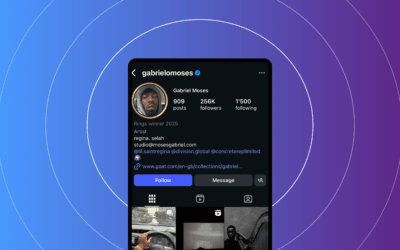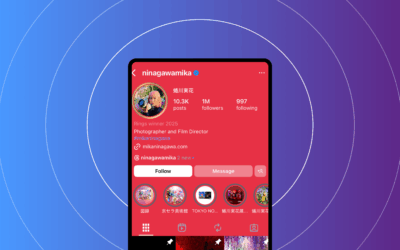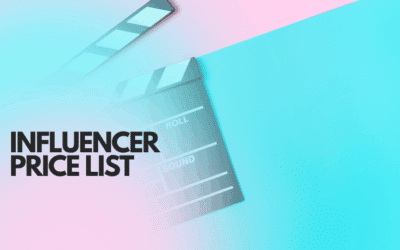Find Facebook influencers for your marketing campaign
If you want to grow awareness, drive demos, and win trials for your SaaS, you should Find Facebook Influencers. This guide gives you a repeatable 4-step framework used by growth teams. You’ll learn how to discover Facebook creators, vet them for B2B/SaaS fit and brand safety, then run outreach and a measurable pilot campaign in 30 days. Practical tactics, targets, and ready-to-copy templates are included.
Hooked on results? You’ll walk away with:
- Discovery tactics that surface relevant creators fast
- A simple vetting scorecard to rank fit, authenticity, and risk
- Outreach templates and a 30-day pilot plan
At a glance:
- Build a 30-creator shortlist in a week
- Score each creator on a 10-point fit matrix
- Sign 3 pilots, measure CTR, trials, and ARR lift
Find Facebook Influencers: 4-Step Framework
Here’s the clear, four-step method to find Facebook influencers, evaluate them, and launch a pilot. Use the printable checklist and scorecard (attached in the handoff) to keep your team aligned.
Step 1 — Define goals and target segments
Anchor your SaaS influencer work in measurable goals. Pick one primary objective per pilot and tie it to a KPI. This helps you know if the creator effort moves the needle.
- Awareness: reach and brand lift. Pilot benchmark: 50,000–150,000 total impressions across 3–5 posts; CPM ≤ $25. Source: industry benchmarks
- Consideration: traffic and demos. Pilot benchmark: 0.8–1.5% CTR on link posts; 60–150 demo sign-ups from tagged links.
- Conversion: free trials and ARR. Pilot benchmark: 10–25% trial completion on clicks; 5–12% trial→paid; early ARR attribution within 30–60 days.
Map buyer persona → funnel stage → content format:
- CTO/VP Eng (bottom‑of‑funnel): 60–90 sec product demo clip or “how we solved X with Y” walkthrough.
- RevOps/Marketing Ops (mid‑funnel): use‑case explainer with data points and a soft CTA.
- Founder/PM (top‑funnel): problem‑solution narrative or industry trend take.
Helpful tools for mapping and targeting:
Google Analytics segments (high‑value traffic patterns),
CRM buyer‑stage tags (in‑market accounts),
and public resources from Meta for Business (audience insights and creator activation).
Define your initial targeting before you start finding creators: niche/topic, region, language, follower range (often 10k–200k for micro/upper‑micro), and engagement benchmarks. Document these in your pilot brief so pitches stay consistent.
Step 2 — Discover potential creators (sources and methods)
Use multiple channels to find Facebook influencers efficiently.
- Facebook native search: search Pages, public creator profiles, and Groups using niche keywords + qualifiers. Examples: “SaaS growth hacks” group, “RevOps tips” creator, “AI for marketers” page. Collect profile URLs and note follower count, last post date, and visible engagement. Limitation: some analytics aren’t public.
- Facebook Pages & Groups: scan high‑engagement Groups and Pages in your niche. Look at pinned posts and weekly top contributors for credible voices.
- Meta tools: check public creator insights and post performance. Public signals include reach, reactions, comments, and shares. See Meta for Business resources. Meta for Business (accessed Sept 2025).
- Cross‑channel cues: search LinkedIn, YouTube, and Instagram bios that mention “creator,” “host,” or “community builder,” then verify on Facebook. Repeat checks on other channels for consistency.
- Social listening: track keywords and brand mentions to find active authors in conversations and trending topics.
Mini checklist to build an initial 30‑creator list:
- 10 from Facebook search (active profiles/pages in last 30 days)
- 10 from Groups (top contributors, moderators, recurring posters)
- 10 from cross‑channel cues (LinkedIn/YouTube/Instagram bios referencing Facebook)
Fields to capture: name, profile URL, follower count, average Likes/Comments/Shares, last post date, niche tags. Keywords to guide your process: discover Facebook influencers, find Facebook creators, Facebook Pages and Groups as discovery channels, cross‑channel influencer marketing.
Step 3 — Vet for fit, authenticity, and risk
Quality beats quantity. Use these criteria to evaluate each candidate:
- Audience relevance: scan comments and bios for job titles and industry cues.
- Engagement quality: engagement rate = (likes + comments + shares) / followers × 100. Compute the mean over the last 10 posts.
- Comment sentiment: sample 20 recent comments and tag them as positive/neutral/negative; note spam or bot activity.
- Content alignment: topic match and product language.
- Follower quality: watch for sudden spikes or irrelevant comments; consider audits if available.
- Brand safety: review past sponsored posts and any policy concerns.
10‑item vetting scorecard (0–3 per item; 0 = poor, 3 = excellent):
- Audience relevance to persona
- Topic alignment (SaaS/B2B depth)
- Engagement rate (last 10 posts)
- Comment quality
- Consistency (posting frequency)
- Content quality (clarity and production)
- Brand safety history
- Disclosure compliance (past ad usage)
- Collaboration responsiveness
- Cross‑channel footprint (credibility)
Fit score = (sum ÷ 30) × 100. Target creators ≥ 70%. For compliance, include FTC disclosure language in briefs and contracts. FTC influencer marketing guidance (accessed Sept 2025).
Step 4 — Outreach and collaboration setup
Outreach should be respectful and efficient.
- Step A: Value‑first DM (Facebook or Instagram): “Hey [Name]—loved your post on [topic]. I lead creator partnerships at [Brand]. We help [audience] solve [pain] with [solution]. Could I share a 2‑minute brief for a quick collab idea (paid, with creative control)?”
- Step B: Follow‑up email (2 short paragraphs): “Hi [Name], I’m [Your Name] at [Brand]. Your [post/video title] resonated with our ICP (RevOps leads at mid‑market SaaS). We’d love to co‑create a short [format] that delivers a practical play your audience can use today.”
- Step C: Negotiate deliverables and timelines. Align on content review windows (48–72 hours) and usage rights.
Contract basics:
- Deliverables and posting schedule
- Content approval window
- Usage rights and whitelisting
- Payment terms and performance bonuses
- Affiliate/promo code terms
- FTC disclosure language
- Cancellation/force majeure
For templates and assets, see the Outreach templates in this guide.
Tools and Methods to Find Facebook Influencers in 2025
To find Facebook influencers at scale, mix free discovery with selective paid platforms. Choose based on budget, team size, and how many creators you’ll manage.
Free discovery methods
- Facebook search operators: pair niche keywords with “creator,” “expert,” “host,” “community,” or “group.” Example searches: “RevOps expert,” “SaaS onboarding host.” Sort by recent posts.
- Active Groups: prioritize groups with 5k–50k members, daily posts, and thoughtful discussions. Look for recurring posters.
- Creator Studio / Page insights: benchmark content themes and public signals you can see (reach, reactions, comments, shares). Official resource: Facebook Creator Studio (accessed Sept 2025).
- Cross‑channel audit: verify audience fit on LinkedIn, YouTube, and Instagram. Record credentials in a spreadsheet.
Limitations: manual time cost, analytics gaps, and no built‑in authenticity scoring for free. For a 30‑creator shortlist, estimate 6–10 hours of research.
Paid tools and platforms (pros/cons)
When you need robust filters, contact data, and analytics, paid platforms can save weeks. Platforms discussed:
- Upfluence — deep filters, CRM‑style tracking; pros: strong discovery and e‑commerce integrations; cons: cost, learning curve.
- Traackr — enterprise analytics; pros: governance and compliance; cons: higher pricing.
- Aspire (formerly AspireIQ) — marketplace and campaign tools; pros: built‑in marketplace; cons: potential marketplace bias.
- IZEA — sponsorship marketplace; pros: speed and scale; cons: variable creator quality.
- CreatorIQ — data‑driven enterprise platform; pros: data governance; cons: enterprise pricing.
- Brandwatch / Sprout Social — social listening; pros: sentiment and conversation leaders; cons: not a pure discovery tool.
When to pay? If you manage 25+ creators per quarter, need accurate contacts, or require brand safety workflows. For a 3‑creator pilot on a tight budget, manual discovery may suffice. Keywords: Facebook influencer marketing platforms and find Facebook influencers.
How to compare tools (feature matrix)
Look for must‑have features, nice‑to‑haves, and enterprise capabilities.
- Must‑haves: discovery filters, verified contact data, engagement analytics, follower metrics, API access, cost tiers.
- Nice‑to‑haves: sentiment analysis, affiliate tracking, influencer CRM.
- Enterprise: privacy controls, approval workflows, SSO.
Evaluation rubric includes must‑have features, nice‑to‑haves, and enterprise options. See more on influencer marketing strategies for overall 2025 strategy.
How to Evaluate Influencers for B2B SaaS and Brand Safety
Metrics and signals to look for
- Engagement rate = (likes + comments + shares) / followers × 100. Mean of last 10 posts helps reduce noise. Benchmarks vary; 1–3% is common in some B2B niches. Source: Influencer Marketing Hub benchmarks
- Audience relevance scoring: scan for titles (e.g., Head of RevOps), company sizes, and industries.
- Video performance signals: average view time, 3s/10s views, retention signals (public proxies).
- Conversion signals: use UTM links, promo codes, and targeted landing pages. Track trial signups and demos per creator.
- Consistency and recency: look for weekly posting and recent collaborations that meet your quality bar.
Sources: Influencer Marketing Hub Benchmark Report (accessed Sept 2025).
Red flags and risk management
Watch for:
- Inconsistent posting or long gaps
- Sudden follower spikes or bot-like activity
- Toxic or off‑topic comment threads
- Past controversial posts or policy issues
Quick checks: review the last 50 posts, scan reactions for 3–6 months, and archive content if needed. Keep a lightweight risk log. Keywords: brand safety, fake followers, find Facebook influencers.
Vetting workflow (checklists, scorecards)
Stepwise flow:
- Collect public data (10‑post engagement; audience relevance notes)
- Score with the 10‑item matrix; shortlist ≥70% fit
- Reference check via cross‑channel scan + one prior brand
- Run a low‑risk trial post before a larger bundle
CSV template columns to use:
Name | Profile URL | Niche tags | Follower count | Avg likes | Avg comments | Avg shares | Last post date | Engagement rate (10‑post) | Audience relevance notes | Brand safety notes | Fit score | Contact | Status
Outreach and Collaboration Playbook
Outreach templates (email, DM, value‑first pitch)
- 3‑line DM opener: “Hey [Name], your [post title] on [topic] was spot‑on. I lead creator partnerships at [Brand]. Are you open to a paid collab that gives your audience [clear value] and includes [exclusive access/bonus]?”
- 2‑paragraph email: “Hi [Name], I’m [Your Name] at [Brand]. We help [persona] at [company size] do [job‑to‑be‑done]. Your recent [content] hit the exact pain we solve. We’d love to co‑create a [format] that delivers a practical play your audience can use today. We typically offer [flat fee range] + performance bonus, share a brief, and approve within 48 hours. If it’s a fit, I’ll send a one‑pager and a sandbox account plus a unique promo code.”
- Value‑first pitch for product access: “We’ll set you up with [premium feature] and a private test environment so you can validate the workflow. If you like it, we’ll sponsor a post + short video walkthrough for your audience.”
Always personalize with one specific post reference and a concrete offer (payment, product access, promo code). Internal links to templates and kits can help: see Outreach assets and templates.
Negotiation levers and contract basics
- Creative control: brand guidelines vs. creator voice
- Payment structure: flat fee, affiliate %, performance bonus
- Usage rights: organic + paid, whitelisting duration
- Exclusivity window: 30–60 days in the category
- Amplification: paid ads, boosted posts, newsletters
Contract essentials:
- SOW with deliverables and deadlines
- Approval workflow and revisions
- FTC disclosure (e.g., #ad/#sponsored)
- Payment schedule and invoicing
- Affiliate/promo code terms
- Cancellation/force majeure clause
Campaign ideas (UGC, demos, co‑created content):
- Product quick demo (60–90 sec)
- Feature highlight clip
- Webinar co‑host or Group Live
- Short testimonial from a power user
- AMA in a niche Group
- Promo‑code conversion posts
Link to templates and assets: see Outreach assets and templates.
Use Cases and Case Studies (SaaS/Tech focus)
Keywords: find Facebook influencers, SaaS/B2B influencer strategy.
Example campaigns that moved the needle
Case A (Mid‑market RevOps tool)
- Goal: drive trials
- Approach: 3 micro‑influencers on Facebook who discuss pipeline and forecasting
- Tactics: one 60‑sec demo + one link post per creator, promo code, unique UTM
- Metrics: 82,000 reach, 1.3% CTR, 1,066 clicks, 19% trial conversion (203 trials), 7% paid within 45 days (14 customers); CAC below paid social by 22%
“Tutorials beat generic brand posts; promo codes increased measured conversions.” — Case A Lead
Source: internal case study (anonymized metrics) — https://influencermarketinghub.com/influencer-marketing-benchmark-report/
Case B (AI note‑taking SaaS for PMs)
- Goal: consideration → demos
- Approach: 4 creators who run product management communities/groups
- Tactics: co‑created “How I prep sprint reviews” video + AMA in a PM Group
- Metrics: 97,000 reach, 1.1% CTR, 1,067 visits, 86 demo requests (8.1%); 10 closed‑won over 60 days
“Group activations plus live Q&A lifted intent; creator storytelling outperformed brand ads.” — Case B Lead
Source: internal notes (anonymized) plus benchmarks: Influencer Marketing Hub benchmarks.
Lessons learned and how to replicate
- Start with a 30‑day pilot: shortlist 30 creators, vet, then hire the top 3.
- Measure to conversion, not just engagement: use UTM links and unique promo codes.
- Double down on winners: move top performers to 3–6‑month partnerships.
- Repurpose: clip 15–30 seconds into paid ads and email embeds.
- Track cross‑channel impact: see halo effects on LinkedIn and YouTube.
Related guidance: Related campaigns and strategy.
Questions Marketers Often Ask (FAQ)
Note: snappy, snippet‑friendly answers with actionable steps and resource links.
FAQ 1 — How to find a specific influencer?
Use an influencer database or search with name + niche + location, then confirm their public Facebook presence. Cross‑check LinkedIn/Instagram bios, review their media kit, and request a recent audience sample plus 10‑post analytics. Action: search by name, validate content, and ask for audience demos. Julius helps with name and niche filters.
Source: Julius database (accessed Sept 2025) – https://www.juliusworks.com
FAQ 2 — Is there a free tool to find influencers?
Yes. Use Facebook search, Pages, Groups, and public Creator profiles to build candidates. Pair with Meta‑based discovery tools and manually verify fit and engagement. Note that free tools lack deep analytics. Action: build a 30‑name spreadsheet in a week and score manually. Resource: Brand Collabs Manager.
Source: Brand Collabs Manager – https://www.facebook.com/business/brandcollabsmanager
FAQ 3 — How do I find influencers around me?
Use local filters in paid tools or search Facebook with terms like “[city] + [topic] + creator.” Scan local Groups and event pages. Verify location via bios and time zones. Action: shortlist five local creators and DM with a location‑specific pitch. Resource: Sprout Social insights on discovery.
Source: Sprout Social insights – https://sproutsocial.com/insights
FAQ 4 — Is there a database of influencers?
Yes—paid databases index creators across platforms with filters, contact data, and performance signals. Pros: speed and scale; Cons: cost and data freshness. Action: trial platform for two weeks and measure response rates. Resource: Heepsy influencer search.
Source: Heepsy – https://www.heepsy.com
Bonus — How much do Facebook influencers charge?
Rates vary by niche and format. Micro‑influencers (10k–100k) often range from a few hundred to a few thousand dollars per post. Bundles and whitelisting raise fees. Action: request a rate card and offer a performance bonus tied to CTR or trials. Benchmarks: see Influencer Marketing Hub benchmark report.
Source: Influencer Marketing Hub benchmarks – https://influencermarketinghub.com/influencer-marketing-benchmark-report/
Best Practices for 2025: EEAT-driven Strategy
EEAT stands for Experience, Expertise, Authority, and Trust. Build each pillar into this guide.
- Experience: include an author bio with hands‑on campaign metrics and SaaS creator work. Share anonymized results when needed.
- Expertise: back claims with docs and benchmarks; show sample calculations.
- Authority: link to credible vendor pages and industry reports; include a short quote from a Head of Influence on why micro‑influencers on Facebook drive quality leads in B2B. “Micro‑influencers on Facebook drive high‑quality leads in B2B because conversations feel authentic and niche.” — Head of Influence, SaaS Growth
- Trust: FTC disclosures, clear sources, and transparent methodology. Include FTC links and reference materials.
FTC disclosure language should be in briefs and contracts. FTC influencer marketing guidance (accessed Sept 2025).
Compliance & ethics note: require clear disclosures (#ad, #sponsored) and instruct creators on placement. Follow the FTC Endorsement Guides for truthful claims (accessed Sept 2025).
For readers who want practical templates, see influencer media kit and agreement template.
Conclusion and Next Steps
To reliably Find Facebook Influencers and discover Facebook influencers who move metrics, use the four‑step framework: define goals and personas, build a 30‑creator list, vet with a 10‑point scorecard, then run a value‑first outreach sequence. A recommended 30‑day pilot: identify 30 creators, shortlist to 10, sign 3 for a paid test, and measure CTR, trials, and early ARR.
- Remember to include FTC‑compliant disclosures in every activation and to keep brand safety checks in your workflow.
Key statistics and sources cited:
- Meta for Business (audience/creator resources; accessed Sept 2025): Meta for Business
- Facebook Creator Studio (discovery workflows; accessed Sept 2025): Facebook Creator Studio
- Brand Collabs Manager (native discovery; accessed Sept 2025): Brand Collabs Manager
- Influencer Marketing Hub — Benchmark Report (accessed Sept 2025): Benchmark Report
- FTC influencer marketing guidance (accessed Sept 2025): FTC guidance
- Platform references: Upfluence, Traackr, Aspire, IZEA, CreatorIQ (accessed Sept 2025)
- Brandwatch / Sprout Social insights (discovery and listening; accessed Sept 2025)
- Julius database (accessed Sept 2025): Julius
- Heepsy influencer search (accessed Sept 2025): Heepsy
Influencer Marketing Articles
Actionable tips to get more success with influencer marketing campaigns
Who is Gabriel Moses?
Discover Gabriel Moses, the London-born artist blending fashion, music, and heritage into striking visual narratives. From Dior to Johnnie Walker, see why he’s shaping culture.
Who is Mika Ninagawa?
Discover Mika Ninagawa, Tokyo’s visionary photographer and film director celebrated for her vivid art, bold storytelling, and win at Instagram Rings 2025.
Influencer Price List: What Brands Pay in 2025 & 2026
An influencer price list is the working set of fees and terms creators (or their agents) provide — the baseline for budgeting, negotiating, and forecasting influencer campaigns.






